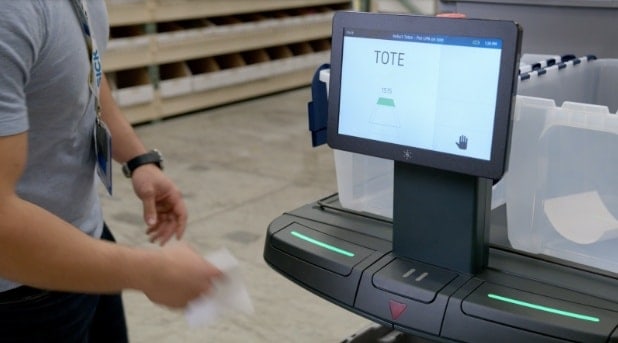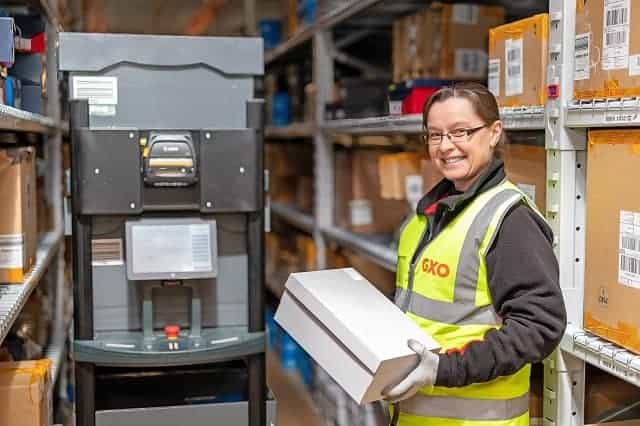Piece picking is an order picking process in which the individual items of an order are picked and then placed in a container or carton before shipping them to the customers. Order picking is a labor-intensive process that comprises as much as 55% of a warehouse or distribution center’s total operating expenses. So, choosing the right picking method is crucial. Generally, piece picking operations are carried out in warehouses where large quantities of goods are stored before their export or sale.
Piece picking methods

Piece picking is also known as each picking, pick and pack or broken case picking. Essentially, it means that items are picked individually, rather by the case or pallet. There are a few specific order picking methods that fall under the umbrella of piece picking. Here’s a look at the various methods.
Basic/single order picking
In this method, the picker picks one order at a time by visiting every aisle until picking is complete for the order. Because the picker needs to visit each aisle to fulfill a single order, this is a time-consuming method. Single order picking is best used in warehouses that process a small number of orders or orders with smaller quantities.
Batch/multi-order picking
Unlike single order picking, batch picking involves picking items for multiple orders at the same time by grouping orders into small batches. This method helps to reduce travel time by allowing pickers to pick multiple items from the same area for each trip to an aisle or picking location. The primary drawback with batch picking is the possibility of mixing orders. Using an order management system (OMS) can help to reduce the likelihood of order-mixing errors.
Zone picking
In zone picking, the warehouse or picking area is divided into multiple zones and pickers are assigned to a specific one. With this method, pickers are not allowed to pick items from other zones. Hence, orders are moved from one zone to the next, as soon as picking for the previous zone is completed. This method is also known as pick and pass. Conveyor systems or other automation equipment may be used to move items from one zone to the next.
Wave picking
In wave picking, multiple orders are grouped into small batches or waves. Pickers pick items for all orders for each wave by using a consolidated picklist. While this method offers a short cycle time by reducing the number of trips through the warehouse, the consolidation process must be handled carefully to avoid errors.
The picking methods described above will come under one of two main categories: person-to-work or work-to-person. In person-to-work, the picker travels to the location in a warehouse or other storage location to pick the items. In work-to-person, the picker will remain in the same location while items are sent to pickers using equipment, such as conveyors.
Types of equipment used in piece picking

There are several types of equipment that can be used in piece picking operations. Let’s take a look at the most commonly used equipment types.
Static shelving
Static shelving is commonly used for piece picking operations. Products are arranged directly on shelving or in plastic or steel bins. Static shelving is economical and is ideal for operations that handle smaller orders consisting of a few items per order.
Carton flow racks
Carton flow racks are a form of shelving that utilizes gravity conveyors. Usually, products will be stocked from the rear of the flow rack. Once a product is removed from the front, the product behind that will slide forward to fill that empty space. Carton flow racks are ideal when there is a high number of picks per order.
Collaborative mobile robots
Collaborative mobile robots leverage machine learning and AI to optimize picking routes in real-time, which reduces unnecessary walking. By leading associates to pick locations and guiding them through each task, collaborative mobile robots keep warehouse workers on-task and improve productivity.
AS/RS (automated storage and retrieval systems)
An AS/RS is a fully automated system which consists of a number of computer-controlled systems to place/retrieve products automatically, with less human intervention. Carousels, for instance, are an example of AS/RS, consisting of a series of shelving units that rotate around a central point to bring items to pickers.
How to determine the right picking method
Selecting the right picking method depends on several factors, including the number of customer orders, complexity, costs and labor, order quantities, and the size and types of items.
There is no one-size-fits-all method that works for every business. In fact, some warehouses use a combination of picking methods simultaneously or at different times to accommodate different demand periods or types of orders. Zone-batch picking and zone-wave picking are commonly used hybrid picking methods.
Benefits of piece picking

Choosing the right picking method for your business offers several benefits. Here’s a look at the benefits warehouses gain from implementing efficient piece picking processes.
Increased productivity
Order picking productivity is measured by a metric known as pick rate. In piece picking operations, pick rate is typically measured by the number of items picked per hour. By planning efficient picking routes to reduce travel time and establishing clear and organized picking processes, pickers can work more efficiently.
Reduced labor costs
The right piece picking methodology can reduce the number of order pickers required to fulfill orders. For example, in batch picking, pickers pick items for multiple orders at the same time, which reduces the number of trips required through the warehouse. Leveraging automation technology, such as collaborative mobile robots, also reduces labor costs by improving productivity and eliminating unnecessary walking.
Improved order accuracy
Piece picking involves picking individual items for orders one item at a time. This one-at-a-time process allows order pickers to identify incorrect items during the picking process, resulting in more accurate orders. Collaborative mobile robots augment the work of humans to improve accuracy, as well, by leading warehouse associates to correct pick locations and utilizing UPC scanning, further reducing human error.
Improved customer satisfaction
Customers are happiest when they receive their orders quickly and without errors. Efficient picking methods allow companies to process orders quickly and accurately, which impacts customer satisfaction.
Piece picking is a commonly used order picking process. Choosing the right method for your warehouse’s needs and leveraging the right equipment to improve order picking accuracy and efficiency helps to streamline your warehouse operations and reduce labor costs.
Download our white paper, 7 Reasons Why Warehouse Robots Beat Traditional Automation, to learn more about how collaborative mobile warehouse robots can help to optimize your piece picking operations.


